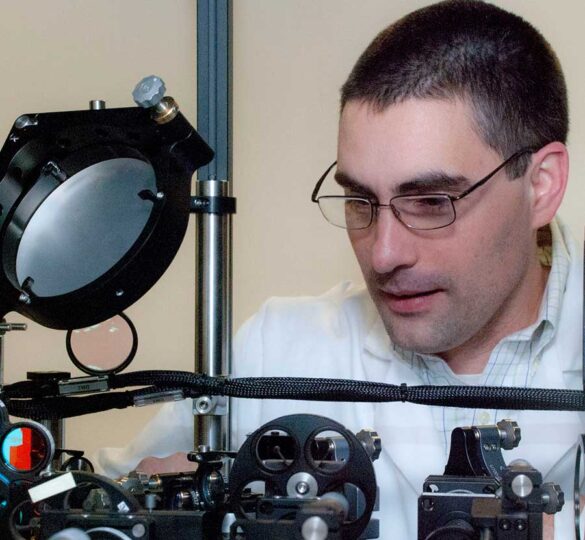Spotlight on Research: Dr. Alfredo Dubra’s Laboratory at Stanford
"We’re not just trying to achieve some answer in terms of scientific curiosity, but our aim is to really help people who are suffering from this disease." — Alfredo Dubra, PhD

My laboratory is focused on developing novel imaging techniques to use in combination with our adaptive optics ophthalmoscopes that we’ve developed as part of the Catalyst for a Cure (CFC2) Biomarkers Initiative.
Adaptive optics is a technology that was originally proposed to look at the stars. We are using the same technology and applying it to the eye, to capture sharp images of the retina. In fact, adaptive optics allows us to visualize microscopic detail, almost as if you were looking through a microscope.
In this way, we aim to detect glaucoma at a very early stage, before vision loss actually takes place. The same instruments should also allow a more personalized treatment, by revealing how each person responds to adjustments in medication. The key element here is detecting how the retina structure and health change as quickly as possible, to minimize or even prevent further vision loss.
An additional benefit of the technology that we are pursuing is that the non-invasive visualization of retinal structure and function at a microscopic scale will lead to new discoveries that help us understand what’s really happening in this disease. We’re taking advantage of the different skills that we have in the CFC consortium to interpret what we’re seeing and evaluate its potential as a biomarker of glaucoma progression.
Along with the development of this proof-of-principle instrumentation, we’re also working on making the technology practical in clinical settings. Incidentally, most of this technology will advance the next-generation retinal cameras in a clinical environment and thus have a positive impact in the diagnosing and monitoring of almost all conditions that affect the retina.
Every day, every month, there are a lot of people who are being affected by glaucoma, and to me this is the reason for the work I’m doing in the laboratory. We’re not just trying to achieve some answer in terms of scientific curiosity, but our aim is to really help people who are suffering from this disease; so we have the same sense of urgency, and we’re doing our best to focus on work that is going to be most beneficial for people who have glaucoma.
Watch this 2018 video research update from Dr. Alfredo Dubra:
First posted on January 3, 2018. At the time of this post, Alfredo Dubra was a member of the Catalyst for a Cure Biomarkers team funded by Glaucoma Research Foundation.

Alfredo Dubra, PhD
Dr. Dubra is a Professor of Ophthalmology at Stanford. His long-term interest is the visualization of retinal structure and function to improve the diagnosing and understanding of eye disease. His laboratory is focused on the development and translation of adaptive optics and microscopy techniques into tools that can be used to address real clinical problems.